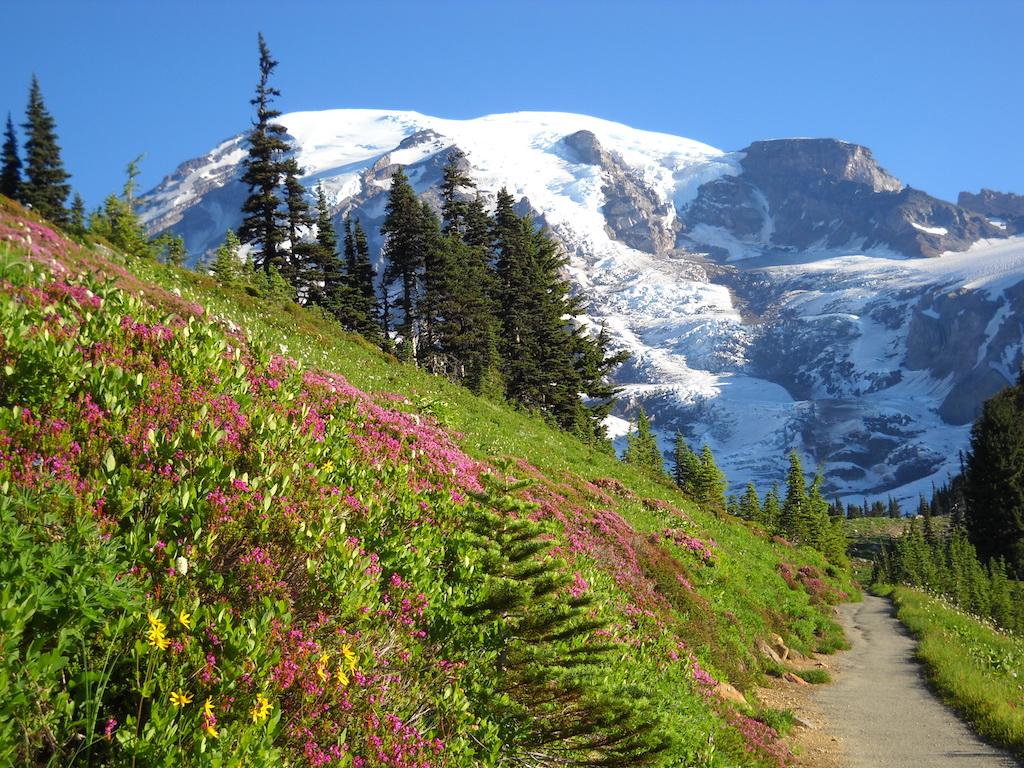
Summer visitors to Mount Rainier National Park likely will need a reservation/Gary Vogt file
If you're planning to visit Mount Rainier National Park in Washington this summer, you'll likely need a reservation to enter the park through the Nisqually, Stevens Canyon, or Sunrise/White River entrance stations during peak hours.
“In recent years, it’s been too common for visitors to sit in idling cars for a couple of hours at the entrance stations and then make laps through the parking lots hoping for an empty parking space,” said Superintendent Greg Dudgeon. “We are testing a system that will spread visitation out throughout the day and season to reduce crowding.”
Park visitors will need a reservation between 7 a.m. and 3 p.m. for the following areas:
- Entering the Paradise Corridor from either the Nisqually Entrance via State Route 706 or Stevens Canyon Entrance via State Route 123 May 24 through Sept. 2.
- Entering the Sunrise Corridor at the White River Entrance via State Route 410 July 3 through Sept. 2.
Reservations can be made using Recreation.gov or by calling 877-444-6777. Dates through July will be available on Recreation.gov beginning February 21, for the Paradise Corridor and April 1, 2024, for the Sunrise Corridor. Reservations for dates in August through Labor Day will open on May 1. In addition to the reservations available up to three months ahead, a block of reservations will be released each day through the summer at 7 p.m. for use the following day.
Each reservation is for one personal vehicle and will cost $2. The reservation will provide a two-hour entry window. For instance, visitors with a 9 a.m. reservation could enter the park between 9 a.m. and 11 a.m. There is no required departure time.
No reservations are required for entry before 7 a.m. or after 3 p.m. Visitors with in-park reservations for lodging or camping in one of the two corridors will not require an additional timed entry reservation and can enter that corridor any time after 1 p.m. the first day of their reservation and throughout their stay. Other permit holders may enter the park without reservations as outlined in their wilderness permit, special use permit, research permit or commercial use authorization.
The park has grown in popularity in recent years, with visitation growing from just over 1.1 million in 2013 to about 1.6 million in 2022. Most of those visits occur between July and September and are concentrated in a small number of destinations, including Paradise.
The National Park Service has been engaged in a visitor use management planning effort focused on the Nisqually-Paradise Corridor. During the planning process, the public also raised concerns about congestion in the Sunrise Corridor. A draft environmental assessment was shared with the public in April 2023 and identified reservation systems as a preferred approach to address the overall visitor experience.
This pilot reservation system is a key part of evaluating what type of system will provide a more enjoyable experience for visitors. The system isn’t expected to reduce overall visitation, but rather spread it out throughout the day and season to reduce crowding.
Detailed information on both the pilot reservation system is located at this webpage.



Add comment